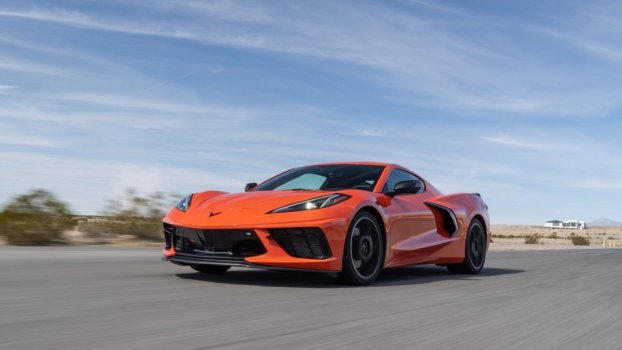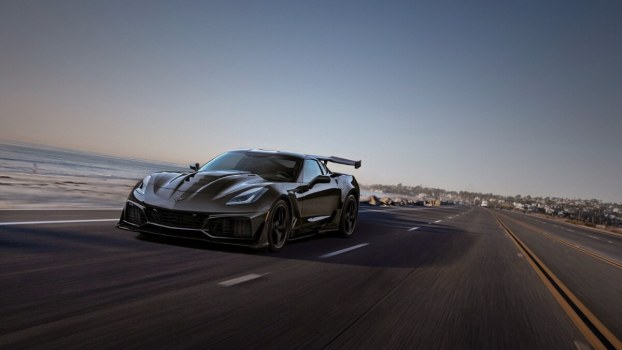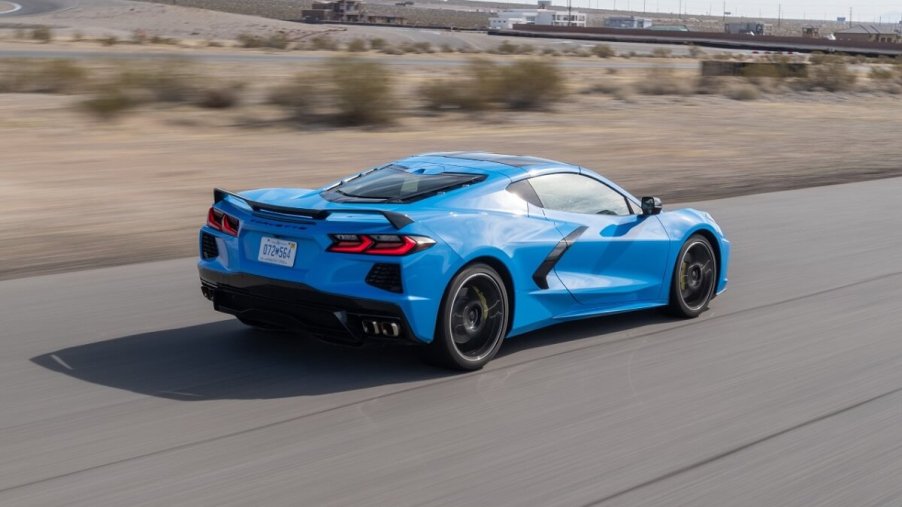
4 Things You Didn’t Know About the C8 Chevrolet Corvette Stingray
In this article:
The C8 Chevrolet Corvette Stingray is arguably the most dramatic evolutionary step in the nameplate’s history. Gone was the traditional front-engine formula of the first seven Corvette generations. Instead, the model adopted a factory midengine layout for the first time since the nameplate’s inception in 1953. However, there are a handful of things you may not have known about the Stingray and its development.
Why are Corvettes so special?
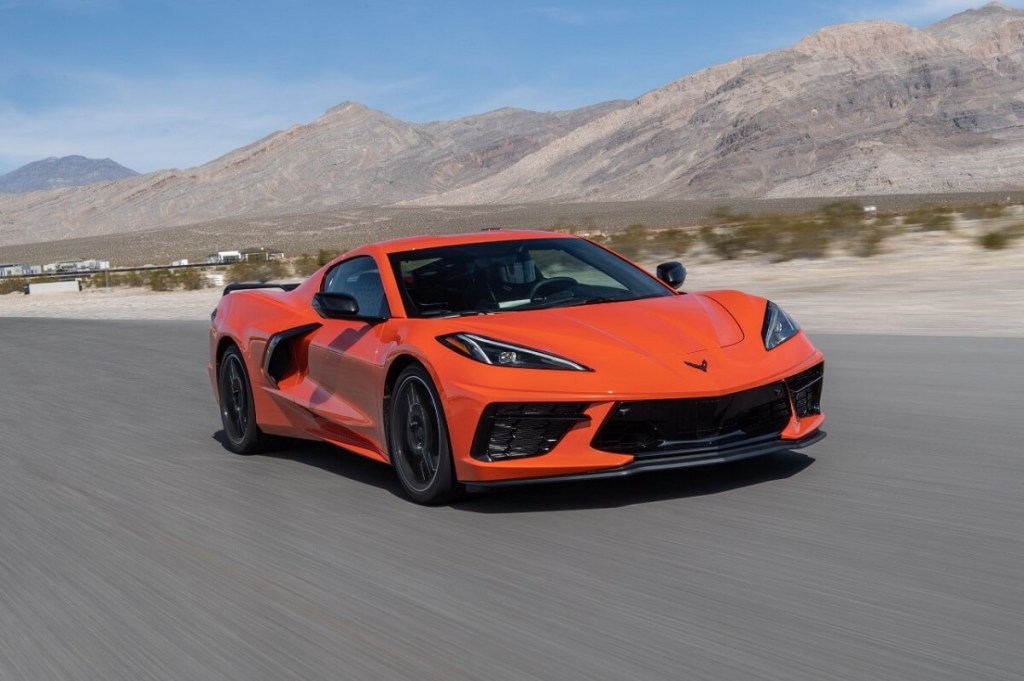
The Chevrolet Corvette is America’s original sports car and one of the longest-running nameplates in the country’s automotive landscape. As a result, the Corvette holds a special place in car enthusiasts’ hearts.
However, the latest base model, the C8 Chevrolet Corvette Stingray, is a unique development for the sports car icon. It shrugged off the classic front-engine formula for a world-class mid-engine layout. Still, not every fan knows some of the eighth-generation model’s claims to fame.
- The C8 Corvette Stingray isn’t the first midengine Corvette
- It’s the first base Corvette to hit 60 mph in under 3.0 seconds
- The Stingray is one of the only cars still on the market with a removable hardtop
- A Stingray’s front-axle lift system can remember the bumps on your route
1. When was the first mid-engine Corvette concept?
Belgian engineer Zora Arkus-Duntov, one of the fathers of the Corvette at GM, designed a midengine prototype in 1959. The vehicle, known as the Chevrolet Engineering Research Vehicle, or “CERV I” was an open-wheeled concept for a midengine Chevy performance car.
Since then, Arkus-Duntov and the GM powers-that-be designed many prototype and concept midengine ‘Vettes. Some prototypes were dramatic departures from the front-engine Corvettes of the day, like the 1973 Wankel-powered “Four-Rotor” Corvette and the 1986 Corvette Indy. However, despite the still-born attempts at evolving the ‘Vette in the earlier eras, the C8 became the first production mid-engine model in 2020.
2. How fast is the 2023 Corvette Stingray 0 to 60?
The 2023 Chevrolet Corvette Stingray, the fourth model year in the C8 lineup, will hit 60 mph in just 2.8 seconds with the Z51 Performance Package. As a result, the C8 Stingray is the first base-model Corvette to hit 60 mph in under 3.0 seconds.
3. Is the C8 a hardtop convertible?
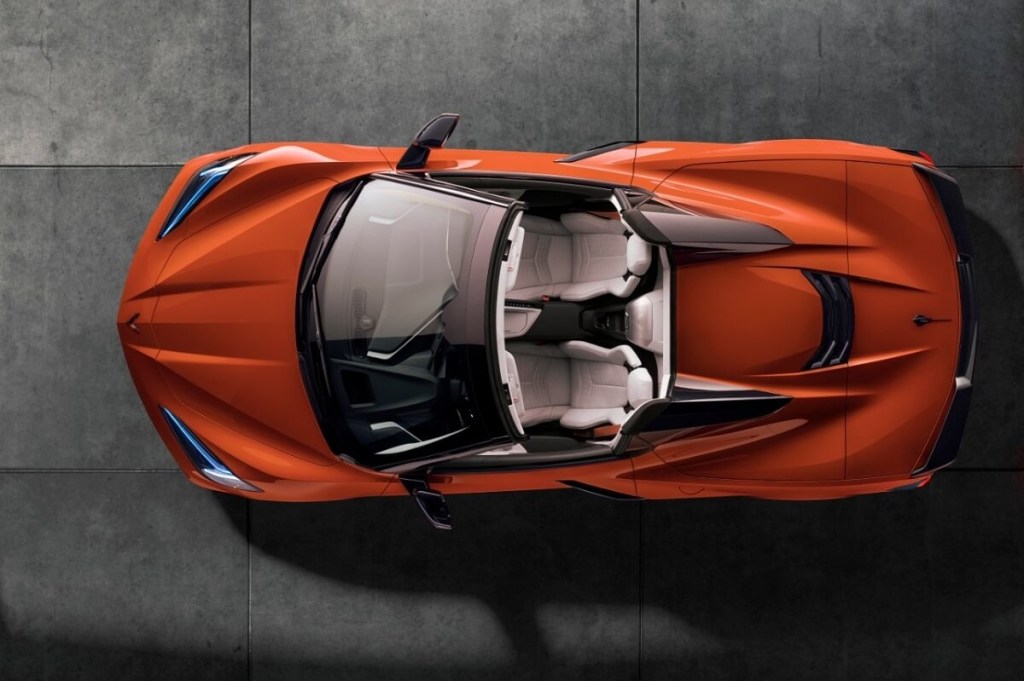
The C8 Chevrolet Corvette, like the C7 Stingray before it, is available as a removable hardtop and a convertible. However, the C8 is the first retractable hardtop convertible in the nameplate’s history, ditching the C7’s soft top for a more rigid roof.
Moreover, the C8 Coupe’s removable roof panel survived the transition from the seventh-gen to the eighth-gen model. As a result, the C8 Stingray is one of the last performance cars on the market with a manually-removable roof.
4. Does the C8 Corvette have adjustable ride height?
The Chevrolet Corvette’s front-axle lift system isn’t a secret; the mechanism will raise the Corvette’s nose to pass over an obstacle like a ramp or speed bump. After driving over the impediment, the C8 can lower itself back to stock ride height. It’s a handy feature for drivers in urban environments with obstacles and poor road surfaces.
However, some fans might not know that the axle lift system is GPS-compatible. That’s right; it can remember up to 1,000 locations on your frequented routes, so you don’t have to prompt the nose to lift. It’s a blessing for owners who want to avoid the judgemental scraping noises of a Corvette grinding over a bump.
Keep up with MotorBiscuit for the latest Chevrolet Corvette content!
